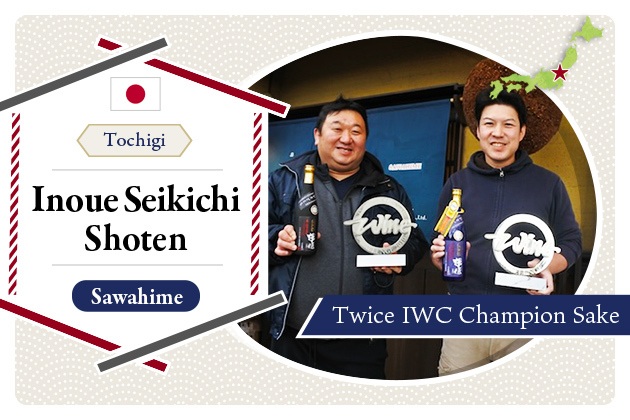
2023.12
13
Those Who Control Water Control Sake Brewing: Timing and Purpose of Dilution
“Muroka nama genshu” is a style of sake now loved not only in Japan but also around the world. The word genshu in this context means sake that has not been adjusted by adding water.
Water is one of the most important ingredients in sake brewing. Water that is added at the beginning of the brewing process is called shikomi-mizu/sui (brewing water). Water added during fermentation is called oi-mizu (following water), and the one added for the final adjustment is called wari-mizu (diluting water).
To better understand the use of water in the brewing process we will explain when the oi mizu (following water) and wari mizu (diluting water) are added and the purpose behind each addition. We will also walk through a method to make low-alcohol sake, a style that is becoming increasingly popular, and how it’s connected to adding water during the fermentation process.
Oi-mizu or following water, added during fermentation
The process of adding water to the moromi mash during the fermentation is called oi-mizu (following water). This is performed as needed during the fermentation for the purpose of balancing saccharification and fermentation.
Yeast that promotes the fermentation of sake tends to weaken when the sugar levels or alcohol levels of the mash are too high. If the yeast is weakened in a high-sugar or high-alcohol environment, fermentation will be slowed or halted. To prevent this, additional water is necessary.
The timing and amount of water are determined by analysing various components during fermentation, including the quality of the sake and the type of the yeast used to make the sake. Adding water at the appropriate time and in the appropriate amount lowers the sugar concentration and alcohol content of the mash, creating an environment conducive to yeast activity. This ensures a steady fermentation until the right amount of sugar has been converted to alcohol.
Two ways of making low-alcohol sake
Water is not only used to ensure a steady fermentation as described above, but it is also added when producing a style of low-alcohol, genshu sake (undiluted sake). By adding water at the appropriate time, the progress of fermentation is controlled, while also diluting down the alcohol level.
In this low-alcohol brewing method, water is added in stages throughout the fermentation of the moromi mash. The purpose is to adjust the progress of fermentation and flavor, aiming for a balance between a low-alcohol, light taste and umami.
In addition to the method of adding water, there is another method of making low-alcohol sake that stops fermentation when the alcohol is low. This is done by lowering the temperature to the point where yeast activity stops. Sake made in this manner tends to have sugar that goes unfermented and this often leaves the sake a little sweeter.
Although these brewing methods require a high level of skill, many breweries are working to produce low-alcohol sake to take advantage of this recent trend.
Wari-mizu or diluting water, added after pressing
The addition of water after pressing is called "wari-mizu". In most cases, wari-mizu is added after filtration and hi-ire pasteurization (the first pasteurization before tank storage).
The purpose of dilution is two-fold: first, to adjust the alcohol content. Generally, sake immediately after pressing contains about 18-20% alcohol, from which water is watered down to about 15-16% alcohol by volume.
The second is to adjust the balance of aroma and flavor. As sake tends to be very concentrated during the brewing process, the addition of water, after pressing, brings the flavors back into balance.
Sake that has not been watered down is called genshu. However, the Japan’s National Tax Agency's definition of genshu includes the following:
It is acceptable to add water to adjust the alcohol content within the range of less than 1% alcohol content in order to adjust for the slightly different alcohol content in each batch
– Reference: Sake Manufacturing Process Quality Labeling Standards Outline|National Tax Administration Agency *in Japanese
In other words, even if water is added, as long as the alcohol content adjustment is less than 1%, the sake can be labeled as undiluted genshu.
This is said to be for adjusting the alcohol content, which varies from year to year or tank to tank for the same product, and for the mizu-oshi (water pushing) operation, which uses water to move what remains in the hoses and other equipment when moving the mash and sake during the process from the top tank to the bottling stage.
While this is the case in sake brewing in Japan, the fact that sake can be labeled as genshu, even if it is watered down to less than 1% alcohol by volume, is a regulation that is difficult for consumers to understand. While many sake consumers are unaware that some genshu sake is in fact diluted, some sake breweries, such as Nara Prefecture's Yucho Shuzo, which brews Kaze no Mori, use the label mu-kasui (no water added) to indicate that no water has been added at all.
Summary
Dilution plays an important part in sake as it’s used to control the pace of the fermentation, it’s critical to making certain styles of sake, and it impacts body, aroma and flavor.
The key to making good sake is to use high quality water at the right time and the right place.
Pickup Articles
2019.01.18
2019.01.25
Trending Articles
Popular Articles
Recent Articles













